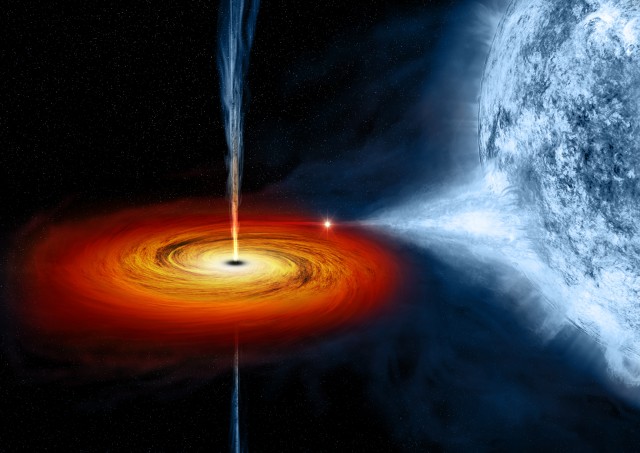
Much of the matter falling onto a black hole is channeled into powerful jets that blast it back out into space. Astronomers have used Doppler measurements to determine that particles in jets are moving close to the speed of light, making black holes some of the Universe's most powerful accelerators. How much energy involved in doing so depends on the jets' composition. It requires a lot more energy to accelerate a heavy particle like an atomic nucleus than it does an electron. So what types of particles are actually contained in these jets?
Astronomers have now found the signature of heavy particles moving at two-thirds the speed of light in the jet from a stellar-mass black hole candidate. María Díaz Trigo and colleagues monitored the X-ray and radio emissions from a binary system thought to contain a black hole and found strong emission most consistent with highly ionized iron atoms accelerated to high velocity. Since this system is typical of other black holes in the Milky Way, this new observation indicates that similar systems are likely to all blast protons and nuclei into the surrounding space.
Stellar-mass black holes are formed from the collapsed cores of stars significantly more massive than the Sun. As such, they have masses comparable to those of stars, as opposed to the supermassive black holes at the centers of galaxies, which may be millions or billions of times more massive. However, the physics of accretion—matter orbiting and falling onto a black hole—for both types of black hole is such that it produces jets and hot disks that emit ultraviolet or X-ray light.
Read 9 remaining paragraphs | Comments


























